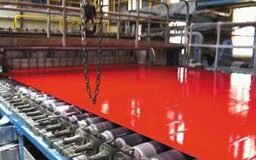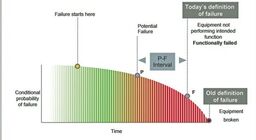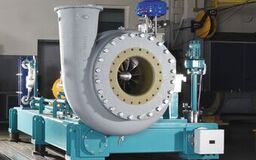Highest Paper Quality Right from the Start
Paper plays an essential role in our everyday lives. Ensuring the first-class quality of paper products is crucial to their usefulness and longevity. Quality control in paper production is a comprehensive process that begins with the procurement of raw materials, especially fibers, and extends to the delivery of the end product to the customer. This article takes a closer look at the development of paper in the early stages of fiber development, highlighting a key quality control measure.
FIBER CHARGE
The quality of the paper depends largely on the type of fibers used for its production. Trees such as pine, fir, and spruce are the main sources of fiber for paper production. These trees undergo a rigorous selection process to ensure that only the highest quality fibers are chosen. In addition, recycled paper products are increasingly becoming a popular source of fiber, promoting the industry’s sustainability and environmental responsibility. Once the fibers are collected, separated, and cleaned, the final selection consisting of different types of fibers (virgin or recycled, long or short) are subjected to the wet end of the papermaking process.
Fig. 1: emtec FPO Fiber Potential Analyzer Online.
Depending on the type of final product, papermakers add certain chemicals to the pulp in the paper machine to impact the properties of the final paper or to improve process runnability, avoiding disturbances. To avoid such issues, constant monitoring of the production process is essential from the beginning. The respective final paper properties could be dry or wet strength, a certain color, or a required surface structure. Most of the respective chemicals are charged positively, whereas the fibers are negatively charged. The surface charge of fibers in the pulp, as measured by the zeta potential, reliably indicates whether the desired quality can be achieved.

The zeta potential is the charge that develops on the surfaces of fibers, fillers, and particles within liquids. Knowledge of these surface charges plays an important role in the evaluation of reaction mechanisms in fiber stock suspensions.
Armed with this knowledge, papermakers can optimize chemical dosage and preemptively address any potential issues. Real-time information provided by the emtec FPO Fiber Potential Analyzer Online (Fig. 1) enables process managers to take immediate countermeasures, which ensures process stability and a high-quality end product.
The emtec FPO Fiber Potential Analyzer Online (FPO) measures the zeta potential online and automatically transfers the data to the process control system or a web server in real-time. These data include the surface charge of fibers (fiber zeta potential), streaming potential, conductivity, pH value, and temperature.
The reaction behavior of fibers with the additives depends on the charge of a sample in the original concentration, as particles with different charges attract each other. Only if the fibers and additives have an opposite charge is an interaction between them possible. The zeta potential predicts the power of this interaction: the stronger the interaction between the charged particles, the higher the zeta potential gets. If it is negative (- mV, anionic), the analyzed fillers and fibers (solids) have a negative charge; a positive zeta potential (+ mV, cationic) is an indicator for positively charged solids within the pulp.
OPTIMUM DOSING MADE POSSIBLE
The main target of the fiber potential measurement is to get information about the negatively charged fibers. That information can be used to determine the optimal amount of the positively charged chemicals.
To guarantee optimal quality properties of the finished product, the dosed chemicals must stick on the fibers. Chemical particles that do not stick to the fibers can pass through the wire and be released together with the white water.
The fibers need a specific value of this zeta potential to have enough “space” on the fibers for the adsorption of the necessary amount of chemicals (see Fig. 2). If the zeta potential of the fibers is not optimal, the process—and finally, the desired properties of finished products—cannot meet the required specifications, because the chemicals will not interact with the fibers as desired.
Continuous monitoring of the production process is particularly important to ensure consistent quality control, especially when adjusting the amount of process chemicals and additives. The entire production process must be adapted to given requirements, gaining the optimal output in quality and quantity without any issues during the production process.

The constant monitoring of the zeta potential of the fibers is specific to the emtec FPO because it operates directly on the paper machine. The emtec FPO works fully automatically, performing sampling, measuring, and cleaning. With a very low maintenance effort, it continuously provides relevant process data to the mill’s control system or a data cloud, accessible from anywhere globally by authorized personnel.
The device can be installed at various points in the paper machine (see Fig. 3), alternately taking samples before and after dosing points for additives, for example. It can perform a maximum of six measurements per hour, though four measurements per hour is the standard, depending on process adjustments.
In summary, the process of converting paper from its raw fiber form to the final product involves a series of stringent quality control measures aimed at meeting the strictest standards for quality and durability. By closely monitoring each stage of production, the industry demonstrates its commitment to providing paper products that meet a variety of requirements while adhering to environmentally friendly practices.
Thanks to constant technological advances and a relentless commitment to quality control, the papermaking sector delivers adaptable and reliable paper products for a wide range of global applications. Online tools such as the emtec FPO, which provide real-time data, enable the industry to further digitalize and automate the wet end of the papermaking process. The device does exactly what an Industry 4.0 testing device should do.




